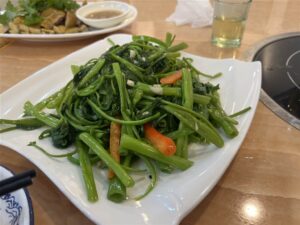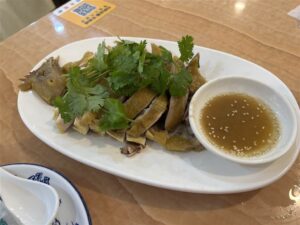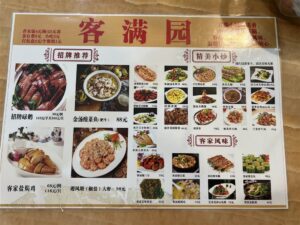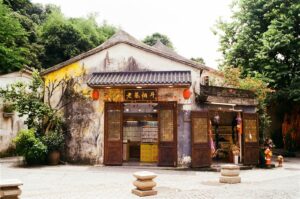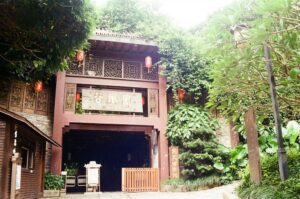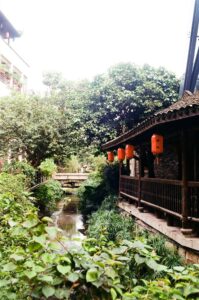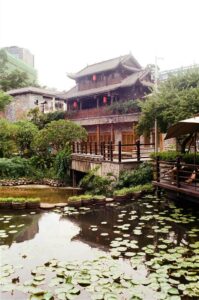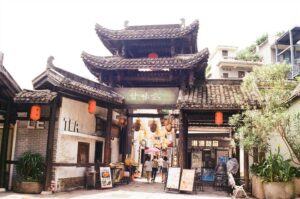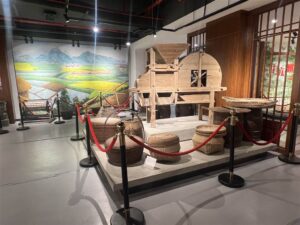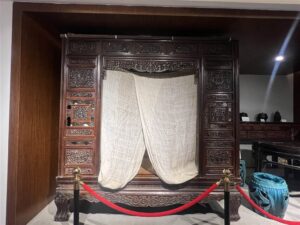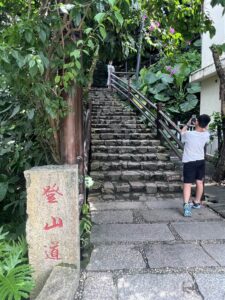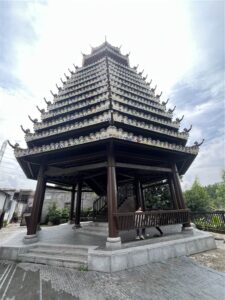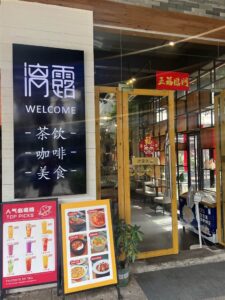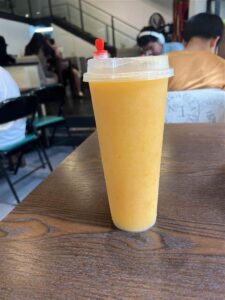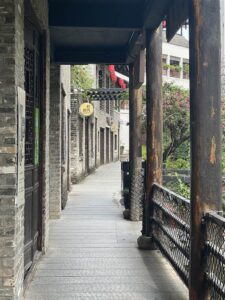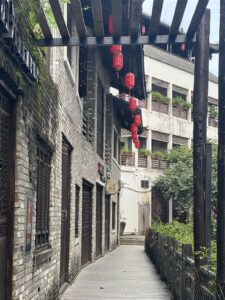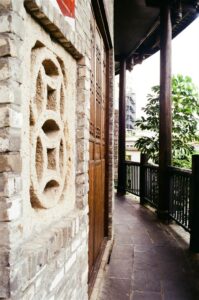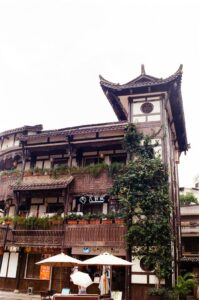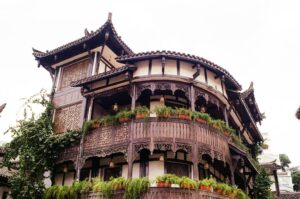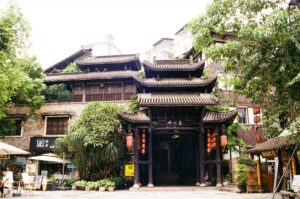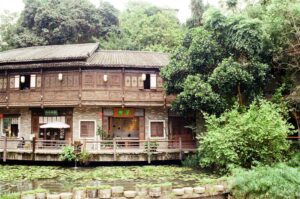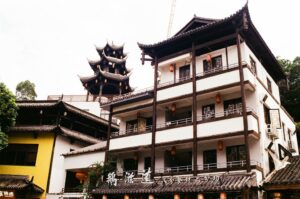Shenzhen Shorts – The Gankeng Ancient Hakka Townlet
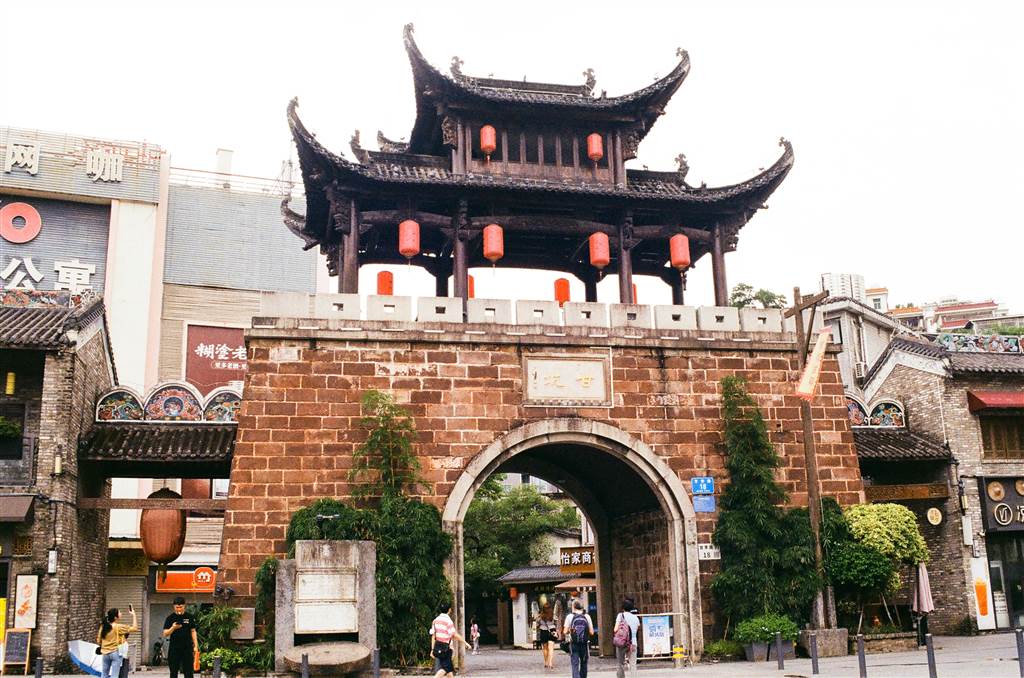
It was a hot day but I was keen on seeing the Gankeng Ancient Hakka Townlet in Shenzhen. From the Futian boundary crossing, I made it onto Shenzhen’s MTR and got off the Gankeng Station on Line 10. Then I walked about 8-10 minutes on Gan Li Road to arrive at the ancient city gate of Gankeng.
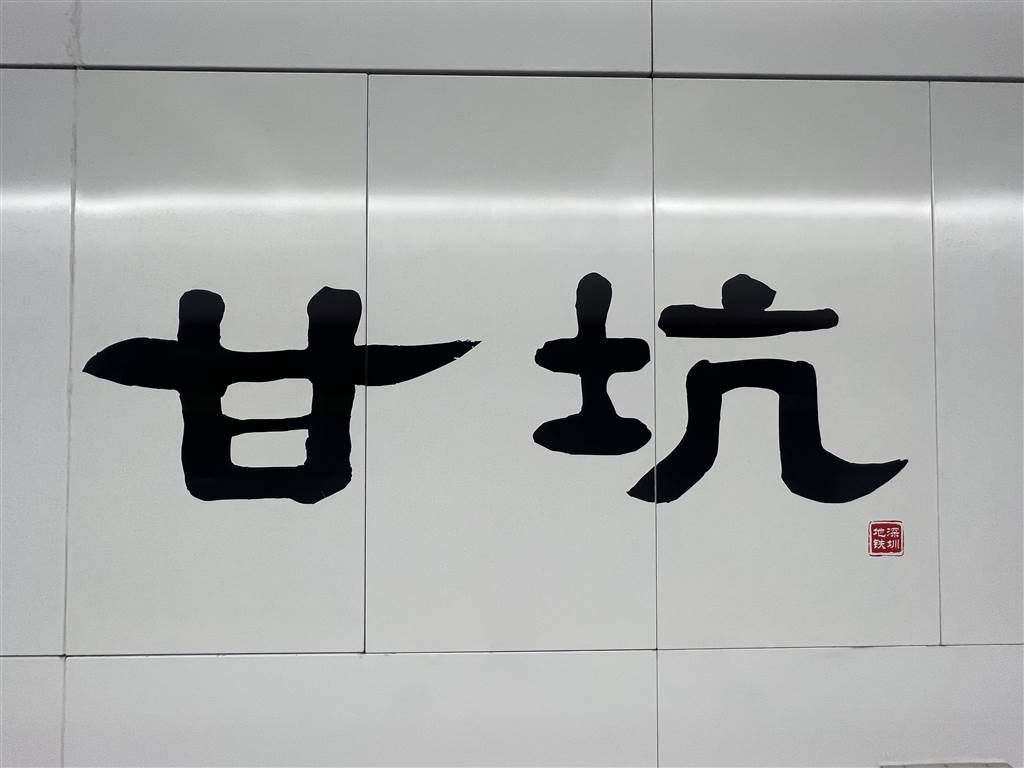
First Impressions of the Gankeng Ancient Hakka Townlet
The ancient city gate greets visitors with a typical pagoda top with a tiled roof and an arched entrance beneath. I felt very excited by this sight. It has been years since I saw similar structures in China, and this would be my first proper trip to an ancient city after the pandemic.
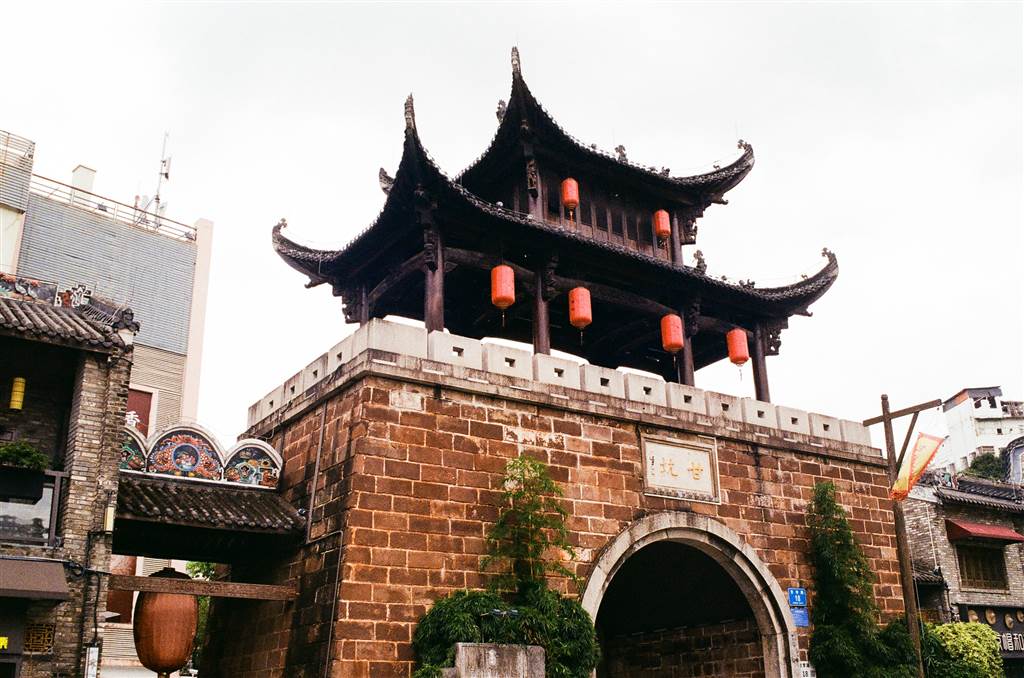
Once entering the gate on its stone-paved road I came upon the map showing the recommended features for visitors.
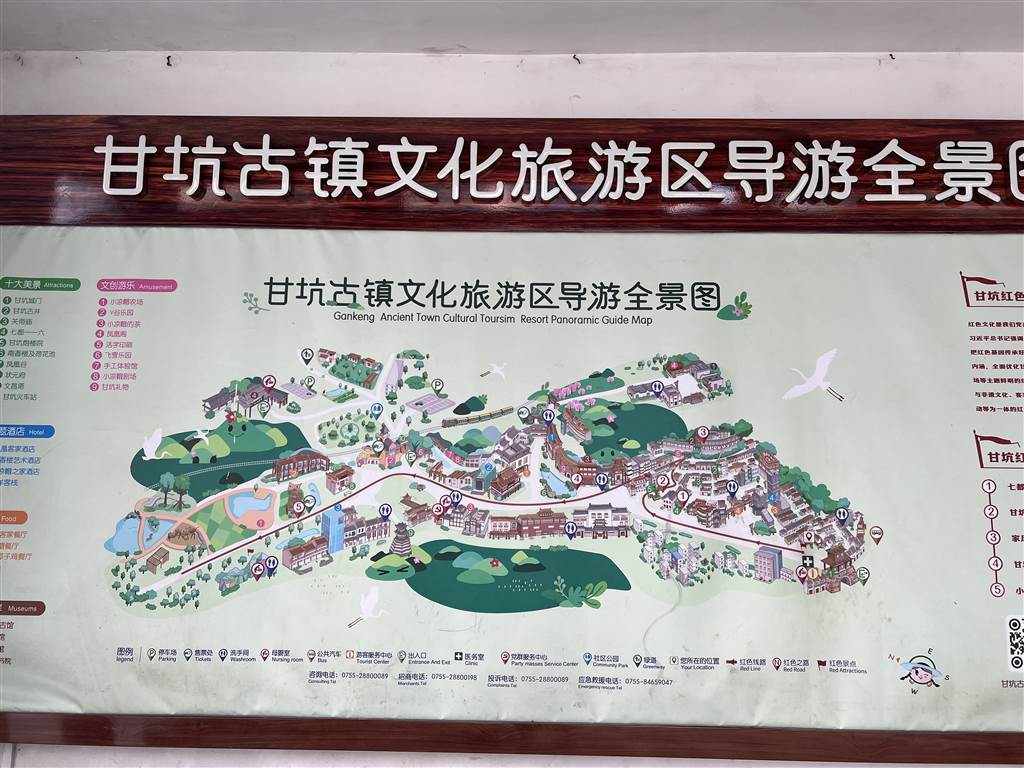
But first of all, I must have lunch somewhere. Since Gankeng has a Hakka origin, I thought it would be a natural choice to have Hakka cuisine. I simply found a proper-looking restaurant on the outskirt of the town to sit down for a meal.
Ke Man Yuan serves Hakka cuisine. Despite my excitement, however, I made a mistake of ordering a Salt-Baked Chicken, which is a Hakka specialty, but the chicken was too salty and too tough. I felt like I was eating a chicken that was hard boiled in soup. But my wok fried veggies was very good.
About the Gankeng Ancient Hakka Townlet
The first official record of the Longgang Area, in which the current Gankeng Ancient Hakka Townlet was located, appeared in the Gazetteer of the Xinan County during the 27th Year of the Kangxi Reign of the Qing Dynasty (1688). By the 9th Year of the Tongzhi Reign (1870), the Longgang Area was an established administration. During the Ming and Qing dynasties, the Yao ethnic minority populated this area. By the early Qing Dynasty, the Hakka people have also moved to this area in large numbers. In time, their heritage will become that which Gankeng is now known.
The Gangkeng Ancient Hakka Townlet as it stands now have a history of about three hundred years. But archaeologists have found evidence of settlement at a much earlier time, even as far back as the Qin Dynasty, and certainly also of the Song Dynasty as well.
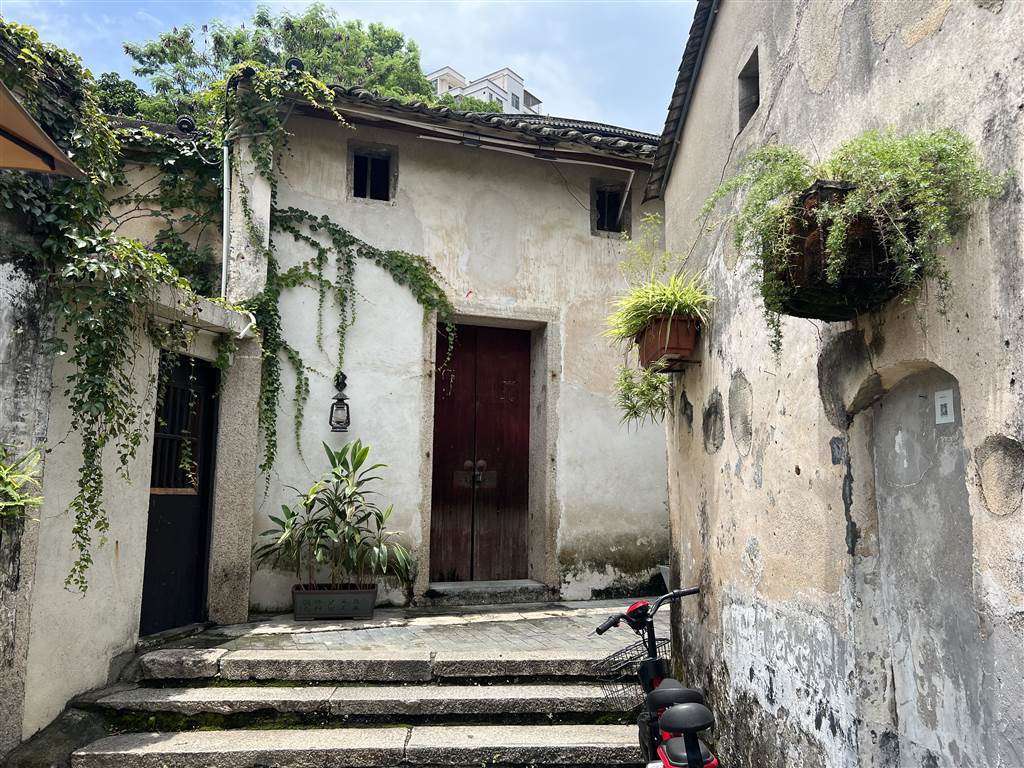
The villagers of Gankeng were farmers, and besides agriculture, they also relied on their handicraft of the “cool hat” for a living. As the economy of southern China changed over the decades since the 1950s, the villagers have also begun to work in factories, but Gankeng remained a poor community. The basic facilities of water provision and plumbing were only available here in the 1990s. With Overseas Chinese Town Holdings Company taking over the revitalization of the area in the 2016 (more below), Gankeng finally saw better days.
A leisurely walk in Gankeng will take at least 2-3 hours, especially during the summer. There are many old structures that are exceedingly picturesque. Feel free to get a little lost in the many alleyways, in which you will see many smaller old structures there that are perfect for picture-taking. The landscaping is also well done, especially in the pond area. In the following, I will point out a few must-visit spots in the area.
My lunch was a little disappointing, and I certainly recommend trying out the many restaurants and snack shops within the ancient townlet. There is also a “Yao” chicken, which is baked in a Chinese-styled clay oven. It is a native cuisine that is worth trying.

The Gankeng Museum
The “cool hat” of Gankeng is considered an intangible heritage. Even during the times when the ethnic Yao people settled in Gankeng, the broad leaf bamboo (Sasa longiligulata) that produced the prime material for the “cool hat” were growing abundantly in this area. The Hakka “cool hat” is traditionally a handcraft of the Hakka women. Its main material is bamboo, with a hole in the middle and cloth surrounding the rims so to taper the heat.

The Hakka cool hats of Shenzhen come with two regional styles. The Gankeng cool hats have black cloth, and the bamboo is plain without paint. The Dapeng style comes with blue cloths, with the bamboo part painted in red.
Furthermore, the Hakka cool hats was a way to distinguish the status of women. Young, unmarried maiden wear cool hats with white fringes. Young, married women wear cool hats with red fringes. For older married women, the fringes of their hats are usually black, green or striped in these colors.
The Gankeng Museum was delightful and that was quite surprising to me. The exhibits were well-arranged and the narratives were educated and sympathetic to the Hakka story.
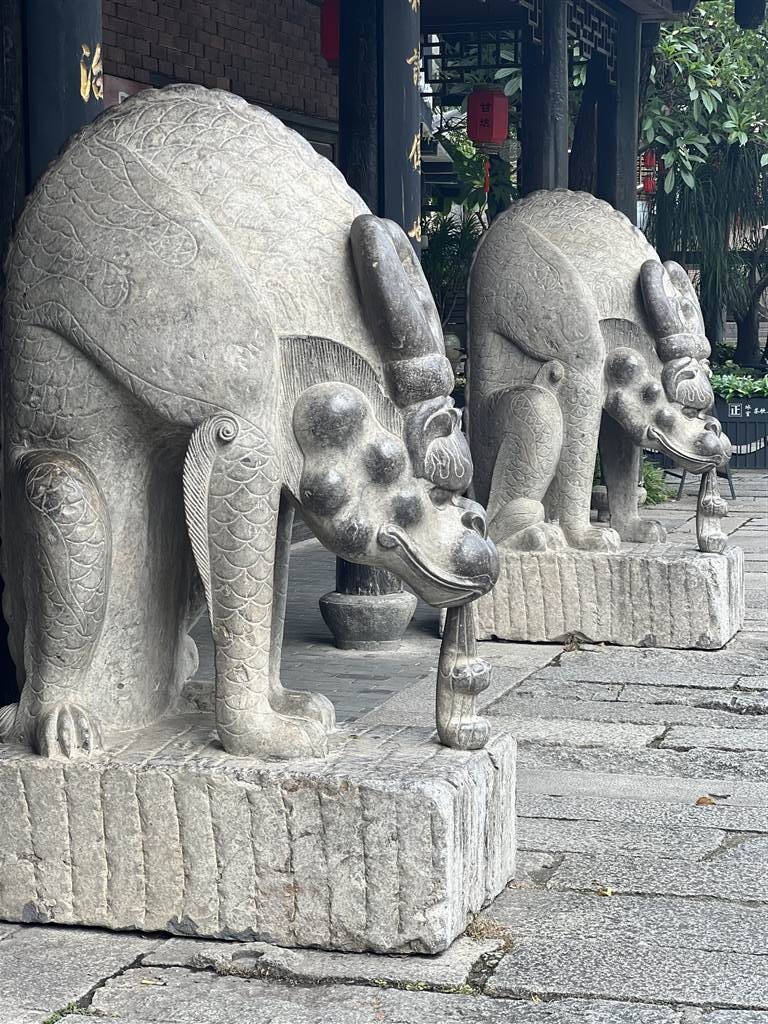
The Gun Tower
The gun tower at Gankeng is a typical structure in many of the ancient villages of Shenzhen. It is built of concrete, with four floors and served the primary purpose of defense against bandits. The villagers also used it for educational purposes. The Gun Tower of Gankeng is attached to the “pai” houses, meaning a row of houses. It was built during the Republican Period.
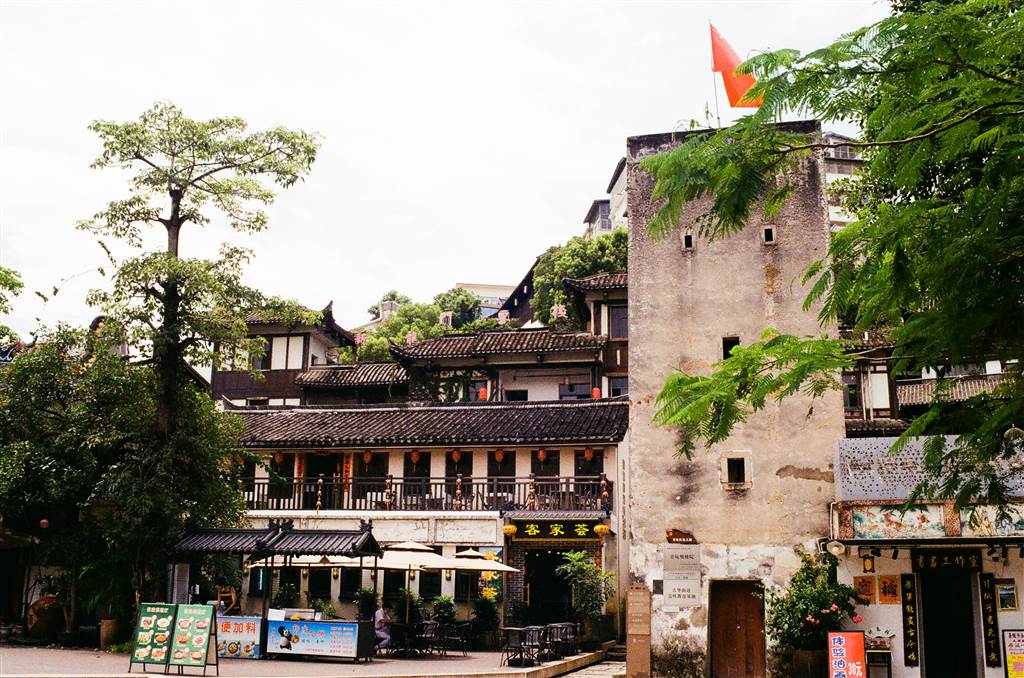
The Zhuangyuan (Scholar) House
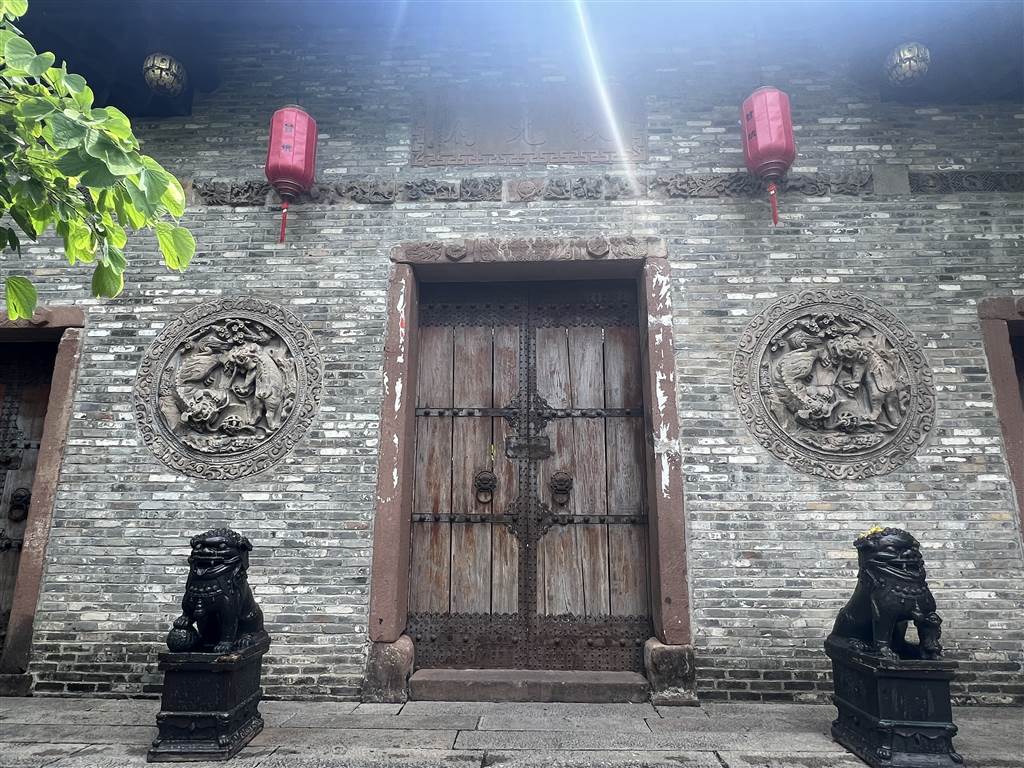
This structure was built during the Qing dynasty and it has 300 years of history behind it. This is dedicated to the Zhuangyuan (the best scholar in the Qing imperial examinations). However, it was closed when I visited.

The Wenchang Tower
It took me a while but I did find the way up to the Wenchang Tower of Gankeng. The Wenchang Tower is a structure of the Tong ethnic minority. The tower is in the shape of an octagon, and this tower has 11 levels. The Tong ethnic minority believed that the tower should be built before they build their settlement homes. The tower is the public space for meetings and community entertainment. As a complex structure to build, the Wenchang Tower signifies good fortune for the people.
Photos: Left — the way up to the Wenchang Tower. Right — the Wenchang Tower.
After resting a bit at the tower, I headed back down and picked a café to cool down and rest a bit. I found Li Lu, and their iced mango drink was very satisfying on this hot summer day. There are a lot of such cafes in the area.
Restoration Effort of the Gankeng Hakka Ancient Townlet
Even up till the 1990s, Gankeng remained a community of very modest means. The revitalization of the village was a result of efforts led by the Overseas Chinese Town Holdings Company and the residents themselves. The restoration began in 2016.
To be fair, I really do think the revitalization was successful. Surely, this model of restoring aged communities into a mixed heritage and business establishment cluster must involve some loss of the community’s original character, and the businesses that prop up all over what should have been a mostly cultural space are signs of over-commercialization. But in my humble opinion, this would be the most sustainable model of heritage preservation, and the involvement of the OCT, which is a quasi governmental enterprise, is necessary.

